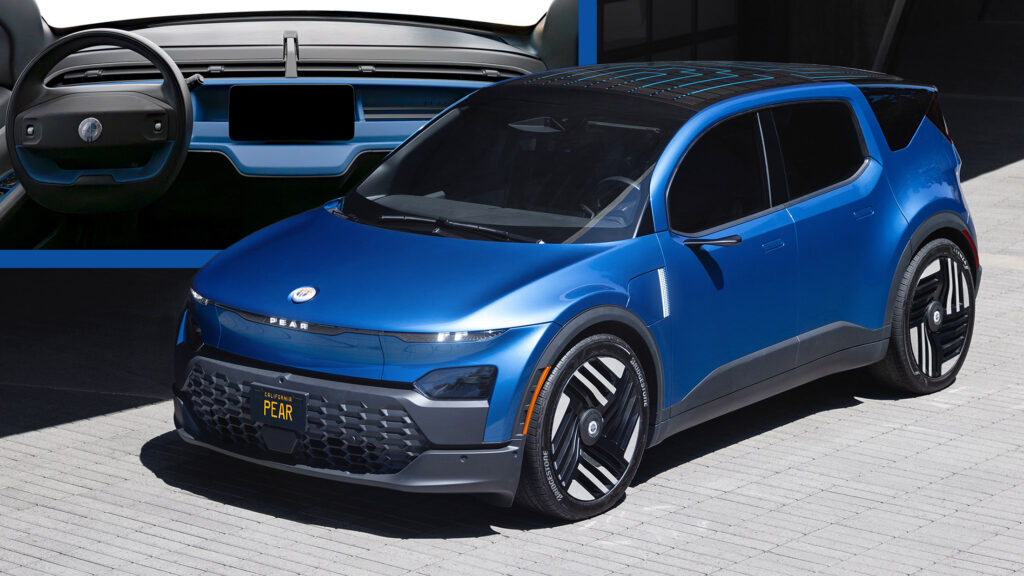Fisker’s sustainable sub-$30k electric crossover will be offered with single and dual electric motors from mid-2025

Fisker is going through a period of upcoming model announcements, with the Pear being the most affordable and likely the most important of the bunch. The electric compact crossover will arrive in mid-2025 with a promised starting price of $29,900 before incentives, RWD and AWD options, a performance-focused Extreme variant, and plenty of cool features.
We are already familiar with the styling of the Fisker Pear which is highlighted further in a new set of official photos. Measuring 4,550 mm (179.1 inches) long, it is 200 mm (7.8 inches) shorter than the Tesla Model Y, looking quite modern with its compact body, large-diameter wheels (20 inches as standard or 22 inches optional), split headlights, wraparound windshield, roof-mounted solar panels, and LED taillights surrounding the rear glass. While the pictured example is not a production-ready vehicle, Fisker claims it will look about the same with the possible exception of the mirror-replacing cameras which are still under review.
More: Fisker Alaska Electric Pickup Detailed, Coming In 2025 With A $45,400 Price
advertisement scroll to continue
A distinct feature is the “Houdini” trunk with the tailgate disappearing inside the rear bumper (similar to the partition in the Fisker Alaska pickup) allowing for easier access to the cargo area. Fisker claims that the operation of the trunk will be much quicker in the production version compared to the prototype. More space for items can be found in the drawer-like frunk that the company prefers to call “froot” (front boot), which will be optionally insulated so you can carry food or drinks.
The interior has a simple layout with the absence of moving parts improving cost-efficiency and durability. The model will be available in 5-seater and 6-seater layouts, always with two rows of seats. The blue-painted dashboard has a large tray and a small infotainment touchscreen in the middle which doubles as a digital instrument cluster. An optional 17.1-inch rotating display will be offered, alongside the “Lounge Mode” where all seats fold flat creating a large space for rest or entertainment. The materials used in the cabin are recycled and bio-based, hoping to make the Pear the most sustainable offering in the segment. Note that the Pear was designed with car-sharing and “busy families with kids” in mind.
Powertrain And Battery Options
The Pear is based on a steel chassis and features a claimed 35% fewer parts compared to a conventional EV of its size. It will come in single-motor RWD or dual-motor AWD variants although Fisker has yet to announce the output figures. The AWD will accelerate from 0-100 km/h (0-62 mph) in 6.8 seconds but the company has also confirmed a high-performance “Extreme” variant that will be even quicker than that. Fisker will offer two battery options for the Pear, with a range of 180 miles (290 km) and 320 miles (515 km) respectively, and WTLP estimates between 320-560 km (199-348 miles) depending on the configuration.
The Pear will also be the first model to introduce the company’s high-performance computer called Fisker Blade. The modular and upgradable unit delivers up to 6.2 TFLOPs of computing power and is designed to be efficient and cyber-secure. All of the vehicle systems connect to it via a “multi-gigabit internal Ethernet network”, allowing it to run diagnostics.
Fisker will showcase a “production-intent” version of the Pear in Munich, Germany, from September 4-10. Production of the EV will take place at Foxconn’s Ohio factory in the US, with the first deliveries scheduled for July 2025.

